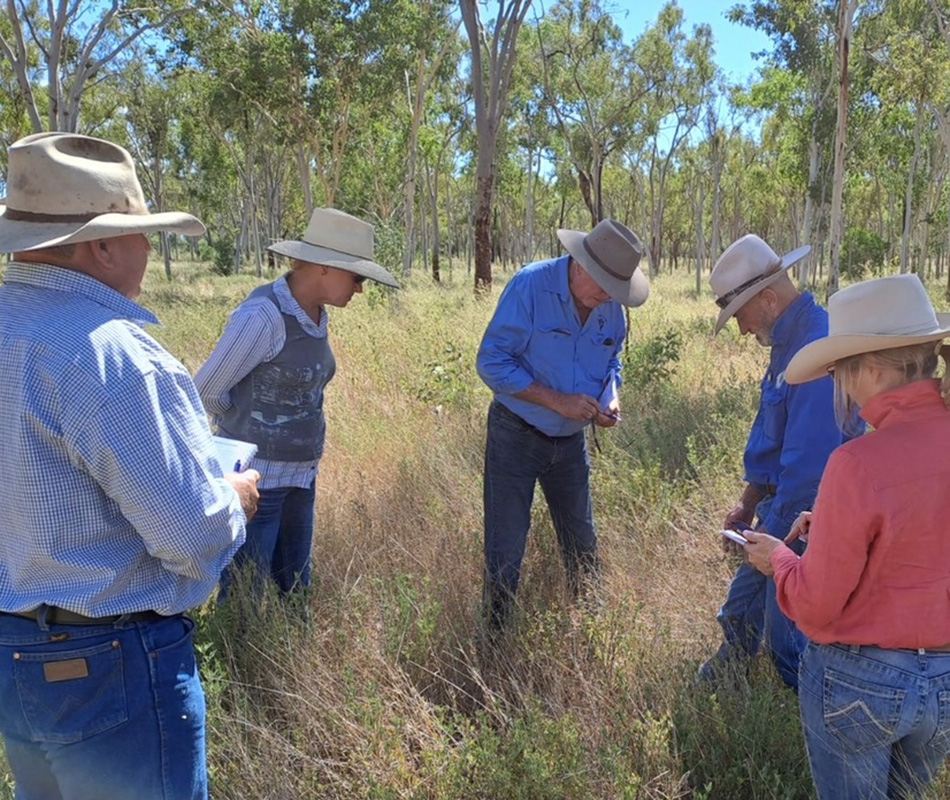Graziers put a range of remediation theories to the test
Grazing consultant Dick Richardson in the field at Hellsgate Station.
A cluster of properties in the Bowen and Collinsville area have been ground-truthing a range of landscape remediation and grazing management techniques during the past five years.
While some landholders tackled large-scale gullies, others took a low-cost intervention approach to treat eroded and scalded sites to reinstate and restore landscape function and improve production values. As gully characteristics vary considerably, specific treatment plans were required for each gully and landscape.
While it’s important to address sediment loads, it’s equally important to demonstrate how small-scale, low cost gully remediation measures will benefit landholders as well as restoring landscape function.
On remediated gully sites, revegetation and stabilisation of sites included using mulch hay and reseeding to improve plant establishment.
On all properties, grazing management practices worked hand-in-hand with rehabilitation works. Higher intensity livestock impact was used on some sites as part of improved grazing management plans.
In the longer term, these actions are expected to produce a resilient, adaptive, profitable grazing business that produces positive reef water quality outcomes.
In May, Hellsgate and Glenalpine Stations opened their farm gates to graziers to showcase how well techniques performed.
Grazing management consultant, Dick Richardson, Nature’s Equity, led discussions on grazing planning to increase forage and groundcover.
The field walks were funded through the Stomping Out Sediment project, funded through the Australian Government’s Reef Trust, and supported by Meat & Livestock Australia (MLA). NQ Dry Tropics partnered with MLA to develop a Producer Demonstration Site to accelerate the adoption of grazing management practices in the Burdekin.
ALSO IN THIS ISSUE:


